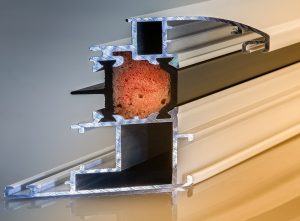
Also known as magnetic field-assisted finishing, magnetic abrasive finishing is a finishing process that involves the use of a magnetic field to apply particulate matter onto the surface of a workpiece or object. The purpose of magnetic abrasive finishing is to apply a powder coating.
Of course, there are other finishing processes used for this purpose. Only magnetic abrasive finishing, however, leverages the power of magnetism to achieve this goal. The magnetic field forcefully pushes the particular matter of the powder onto the workpiece or object, thereby creating a protective shell over the workpiece of object.
History of Magnetic Abrasive Finishing
Magnetic abrasive finishing has origins dating back to the 1930s, during which it was used by manufacturing companies in the United States. It wasn’t until about a decade later, however, when the first patent for magnetic abrasive finishing was filed with the United States Postal and Trademark Office (USPTO). In the years to follow, manufacturing companies in other territories — Soviet Union, Germany, Poland, etc. — began using this finishing process as well. By the 1980s, magnetic abrasive finishing was a well-known and frequently used finishing process in the manufacturing industry.
How Magnetic Abrasive Finishing Works
Unlike other finishing processes, magnetic abrasive finishing doesn’t “spray” particular matter onto the workpiece or object. Instead, it uses magnetism. To perform this process, manufacturing companies use a mixture of magnetic particles and abrasive powder particles. A magnetic field is then applied, which forces the combined particles onto the workpiece or object. You can think of magnetic abrasive finishing as a form of powder coating that uses a magnetic field.
Most magnetic abrasive finishing applications use either an electromagnet or rare-earth permanent magnet as the source for the magnetic field. Rare-earth permanent magnets are stronger and less expensive, but only electromagnets allow for the changing of flux density. In other words, manufacturing companies can alter the strength of the magnetic field when using an electromagnetic. The magnetic strength of a rare-earth permanent magnetic can not be adjusted.
Benefits of Magnetic Abrasive Finishing
There are several reasons for choosing magnetic abrasive finishing over other finishing processes. Since the application of powder particles doesn’t require direct contact with the workpiece or object, for example, it can coat hard-to-reach areas like the interior walls of pipes. Magnetic abrasive finishing is also highly effective at evenly distributing the powder particles. When performed properly, it creates an even and consistent powder coating over the workpiece or object.
